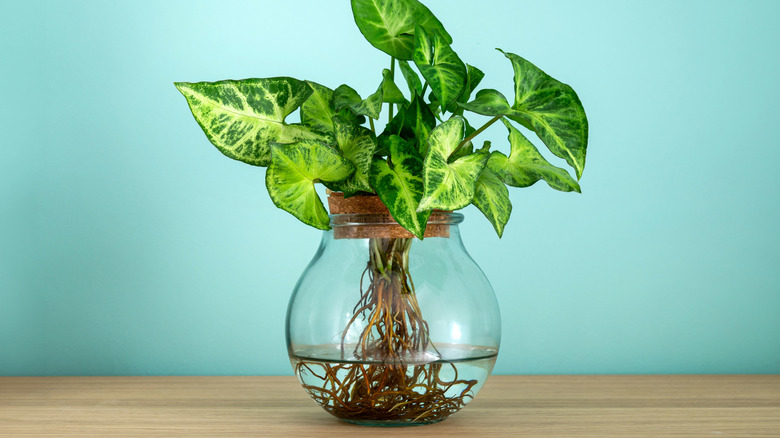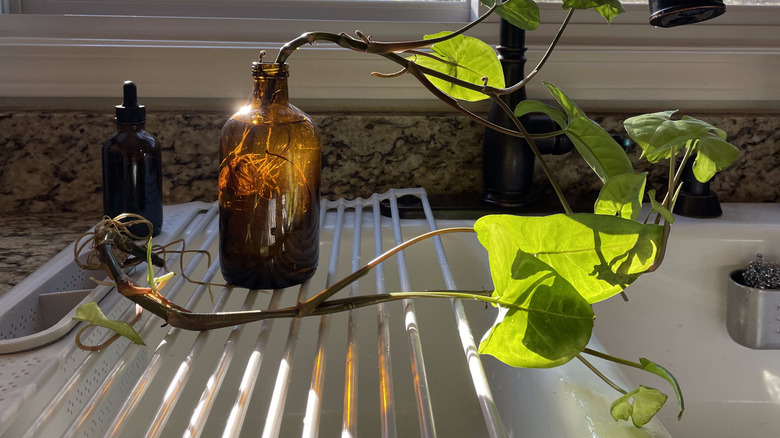How To Quickly Propagate Syngonium In Water
Plants are the gifts that keep on giving — often very affordably. In fact, propagating the plants you own allows you to easily grow your jungle for free. One of the easiest routes for propagation is with water. Syngoniums, more commonly known as arrowhead plants, are among the list of plants that can grow in water indefinitely. These tropical plants hail from the rainforests of Central and South America, which means they love bright indirect light and thrive in humid environments, such as the high humidity found in bathrooms without windows.
If you're new to propagating plants in water, syngoniums are ideal for beginners. Between soil and water, the latter actually produces stronger, faster root growth — and it's the less messy option of the two. Time your propagation with early spring or summer, which is the active growing season for syngoniums. Some varieties may successfully thrive when propagated during other times, but you'll need to baby them a bit more with warmth and humidity.
Before you take a cutting, inspect all the stems and find one that looks healthy — the leaves shouldn't be wilted or yellow. The stem should be at least 4 to 6 inches long, ensuring that it has enough stored energy to push out new roots. Ideally, the cutting should include at least two nodes, which are the little bumps found along plant stems that will produce roots. Use sanitized sharp shears to cut the stem off at a 45-degree angle. If you wish, dip the cut end into a rooting hormone to help multiply plants in your home and garden to jumpstart the root growth.
Caring for your syngonium cuttings
Once your cutting is in water – ideally filtered or distilled water free of contaminants – remove any leaves sitting below the surface that could potentially rot in the water. Find a place that mimics the plant's natural habitat — remember, syngoniums love warm, humid spots with bright indirect light. Within a few weeks, you should spot new roots, at which point you could transfer the cuttings to soil or leave them in water.
Change the water once or twice each week, especially when you notice cloudiness or a buildup of bacteria, and inspect the roots for signs of rot or disease. Unhealthy roots will give off a bad odor and will feel soft and mushy rather than firm, even when wet. Healthy roots are white or light-colored versus brown.
One drawback to growing a plant in water is that it lacks the essential nutrients that soil provides. You can compensate by applying a liquid fertilizer rich in nitrogen, phosphorous, and potassium, but be aware that it may muddy up the water. As your syngonium thrives, it will naturally grow as a vine. If it looks too leggy for your taste, trimming it will cause it to grow back fuller and bushier.

